Kaparkan Falls: A Hidden Gem of Abra, Philippines
Kaparkan Falls: A Hidden Gem of Abra
Nestled in the dense green rain forest of Tineg, Abra, Kaparkan Falls, also known locally as Mulawin Falls, is one of the most stunning waterfalls in the Philippines. This travertine waterfall, with its unique limestone formations and crystal-clear waters, is a hidden paradise that showcases the unspoiled beauty of Abra.
Let’s take a look at the fascinating features of Kaparkan Falls, its location, and steps to help protect this natural wonder from the adverse effects of over-tourism.
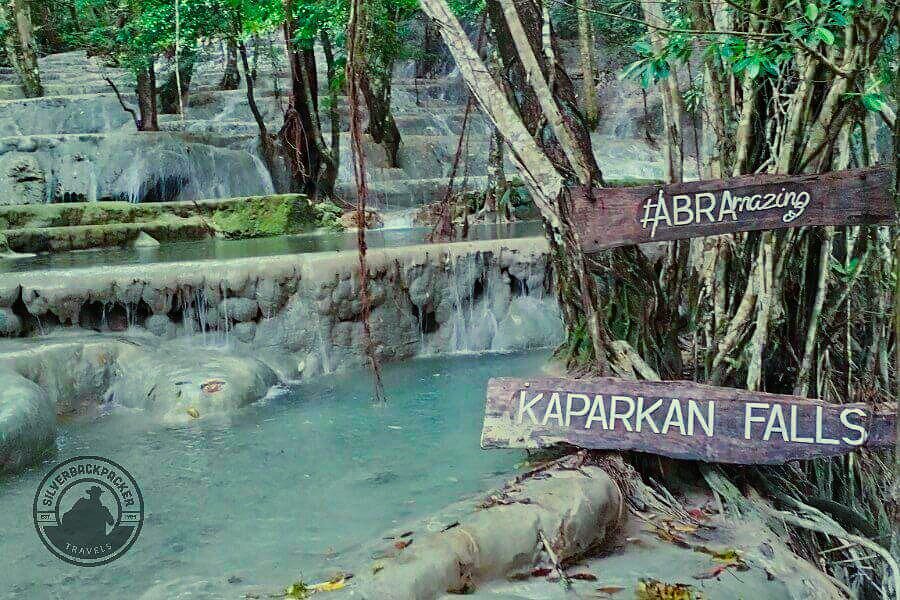

Location and How to Get There
Kaparkan Falls is located in Tineg, a remote town in the province of Abra, Philippines. It sits about 30 kilometers away from Bangued, the provincial capital. At the moment, the journey to Kaparkan Falls is still an adventure, as it involves a mix of rough roads and off-road terrains that add to the thrill of reaching this hidden gem.
To Get There:
- From Manila: There are regular Partas buses from Pasay and Cubao as well as Viron, and Dominion buses from Cubao bound for Bangued, Abra. The journey takes around 8-10 hours. From Laoag or Vigan there are also buses and vans to Abra.
- From Bangued to Tineg: There are trips every weekend, with Abramazing Tours, during the rainy season to Kaparkan Falls from Blugas in Tayum, which involves a 6×6 monster truck ride, as the road is still not concreted all the way to the jump-off point.
The off-road part of the journey depends on road conditions and weather. This rough yet exhilarating ride is part of the experience, leading you through scenic mountain landscapes.
You will need to take a tricycle from Bangued to Blugas in Tayum if you don’t have your own transport. The trip takes about 20 minutes. - Hiking to Kaparkan Falls: Once you reach the drop-off point, a couple of hours hike along a forested trail is required. The hike is relatively easy, making it accessible even for those without extensive trekking experience.
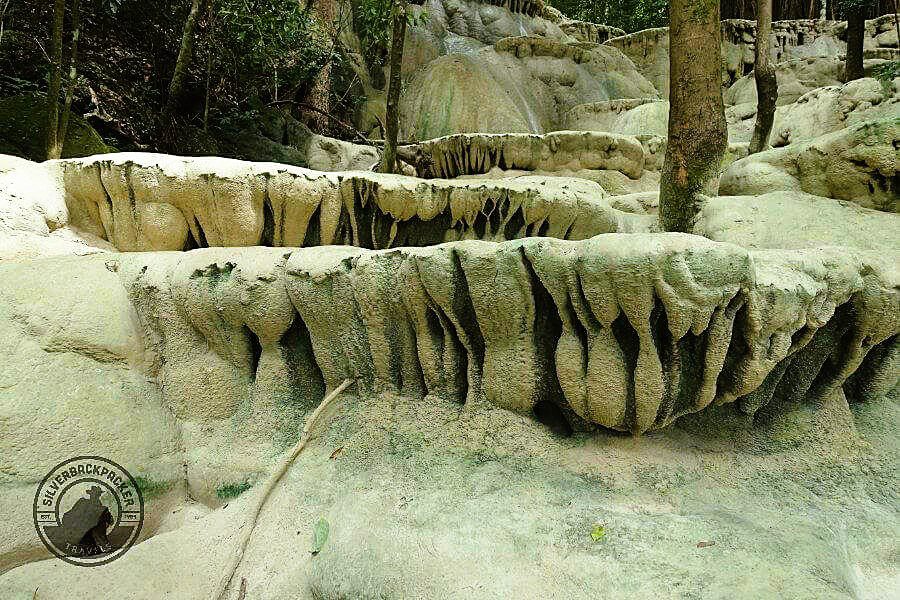
Features of Kaparkan Falls
Kaparkan Falls is often compared to Pamukkale in Turkey due to its terraced limestone formations. Here are some of its standout features:
- Terraced Pools: The falls cascade down in tiers, creating natural infinity pools with turquoise waters that glisten in the filtered sunlight. These pools are perfect for bathing and taking a refreshing dip.
- Unique Limestone Formations: The creamy white limestone terraces, formed over thousands of years, are what make Kaparkan Falls unique. The terraces have been shaped by the flow of the water, creating a beautiful and intricate natural staircase from its source to the Tineg River 530 metres below.
- Best Time to Visit: The falls are most beautiful during the rainy season (July to October) when the water flow is at its peak, turning the terraces into a stunning cascade of water.
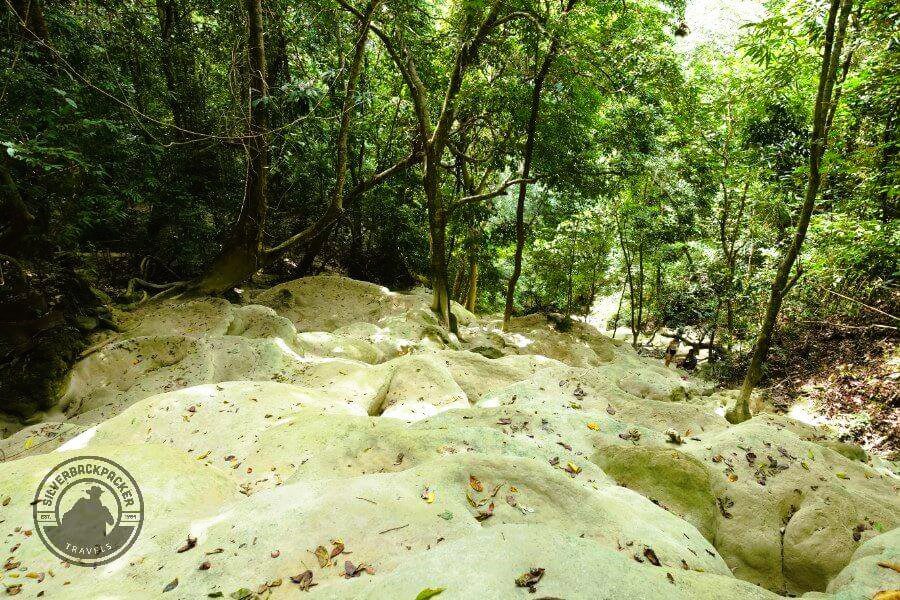
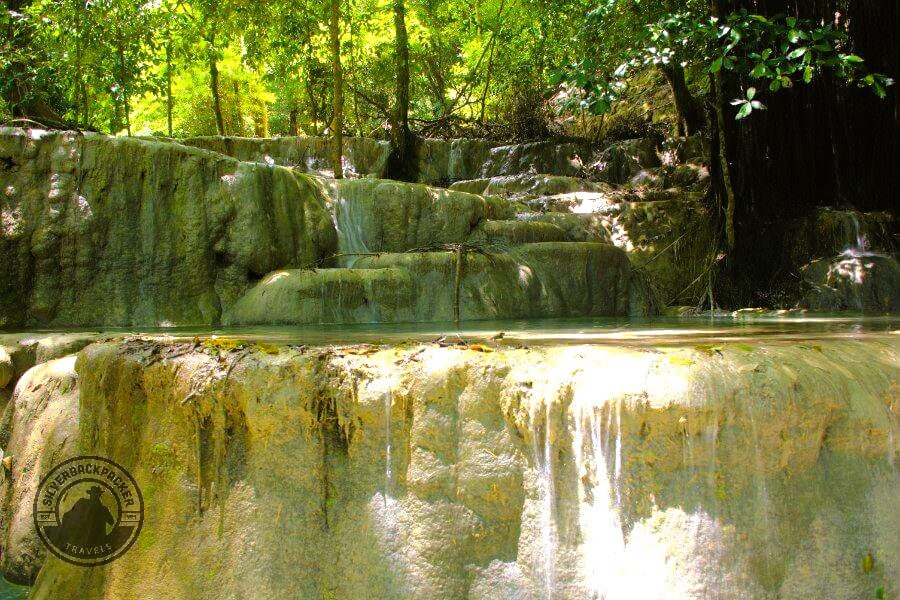
How was Kaparkan Formed?
Travertine waterfalls like Kaparkan are formed by the deposition of calcium carbonate from mineral-rich waters, creating terraces, ridges, and pools over time. The unique aspect of travertine waterfalls is that they actively grow and change as calcium carbonate is continuously deposited.
When leaves, branches, and even whole trees fall into the water, they become part of the travertine formation through a process called encrustation. Here’s how it happens:
- Deposition of Minerals: The water in travertine waterfalls is rich in calcium carbonate due to dissolved limestone from the surrounding geology. As the water flows over rocks and falls, it loses carbon dioxide, causing calcium carbonate to precipitate out of the water.
- Encrustation Process: When organic material like leaves, branches, or even larger debris like whole trees enter the waterfall or its pools, they become coated with calcium carbonate. This mineral buildup happens relatively quickly, encasing the organic matter in stone.
- Fossilization of Organic Material: Over time, the layers of calcium carbonate continue to build up around the organic matter, effectively “trapping” it within the travertine. As the encrustation thickens, the organic material may decay away, leaving a fossil-like imprint within the stone.
- Growth of Travertine: The trapped organic matter contributes to the growth of the travertine structure. As new layers form, these organic inclusions are buried deeper within the waterfall’s terraces and deposits.
This process is visible in some travertine waterfalls, where you can see the shapes of branches, leaves, and other organic matter encapsulated in the rock, adding to the dynamic and ever-changing appearance of these natural formations.
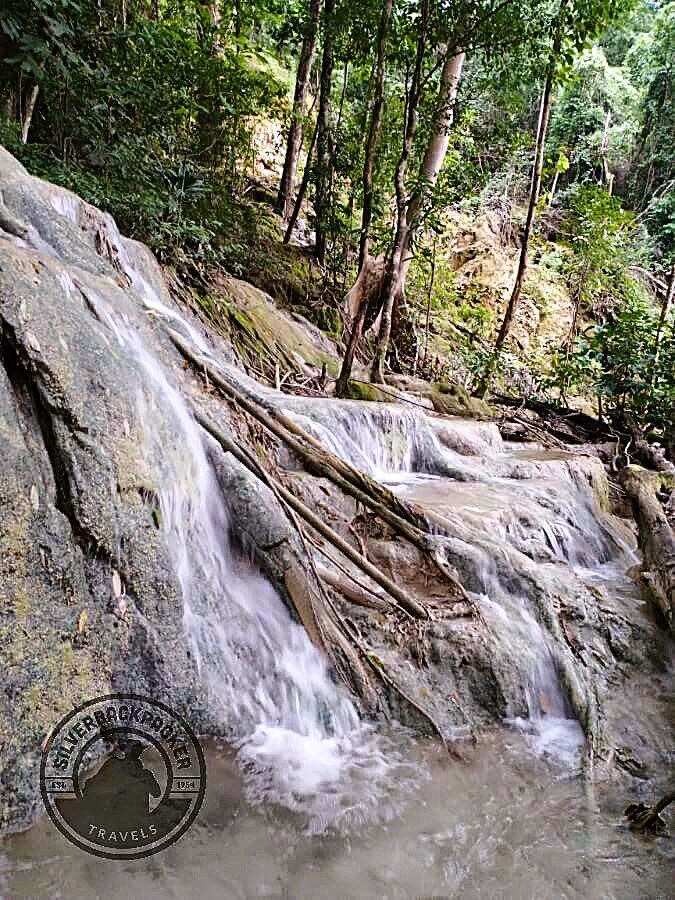
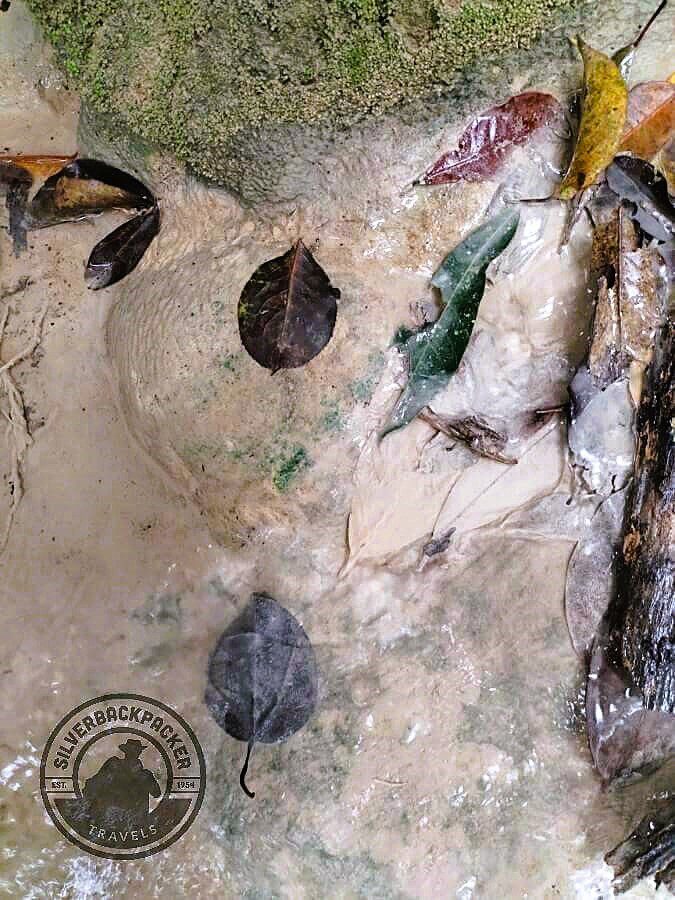
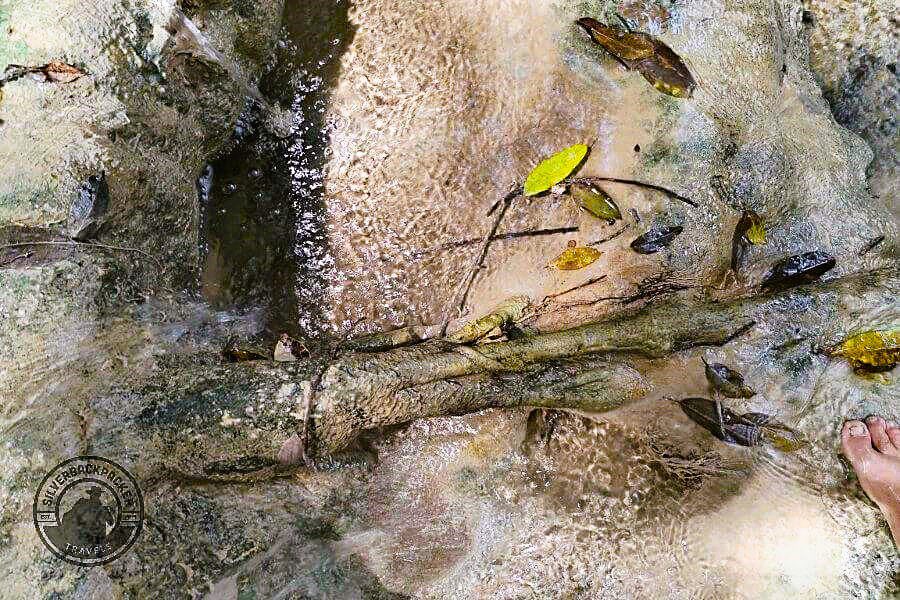
Protecting Kaparkan Falls from Over-Tourism
As Kaparkan Falls gains popularity, and a paved road creeps nearer and nearer it faces the risk of environmental degradation due to over-tourism. To ensure that future generations can enjoy this natural wonder, here are some ways to protect it:
- Regulated Tourism and Visitor Limits: Implementing a limit on the number of daily visitors can prevent overcrowding and reduce the environmental impact on the area. Local authorities and tour operators should work together to regulate the flow of tourists.
- Responsible Tour Operators: Engaging with tour operators that promote sustainable and responsible tourism is crucial. These operators should educate tourists on the importance of respecting the natural environment and adhering to set guidelines.
- Leave No Trace Principle: Visitors should always follow the “Leave No Trace” principles, which include taking all trash with them, not disturbing wildlife, and avoiding actions that can damage the delicate limestone formations.
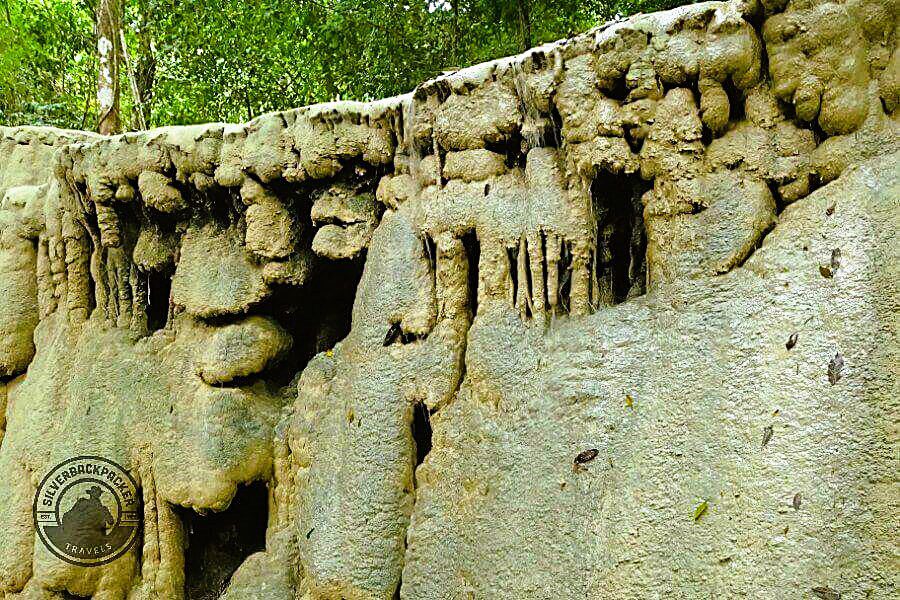
- No Swimming in Restricted Areas: Some areas of the falls may be off-limits for swimming to preserve the natural pools and prevent erosion. Tour guides should enforce these rules and ensure that tourists respect them.
- Community Involvement: Empowering the local community to take part in the conservation efforts of Kaparkan Falls can create a sense of ownership and responsibility. This can be done through eco-tourism initiatives that provide income without compromising the environment.
- Stopping the construction of the road would be the best protection, making it that much more difficult for visitors to reach Kaparkan Falls. Once the road is completed it will be a free for all leaving the Falls full of trash, possible vandalism, and the stealing of plants from the area.
- Declaring the whole area as a Protected National Park with guided tours by well trained and knowledgeable guides.

Final Thoughts
Kaparkan Falls is more than just a beautiful destination; it’s a reminder of nature’s incredible artistry.
As more people discover this hidden gem, it’s our shared responsibility to ensure that it remains pristine for future generations. By practicing sustainable tourism, respecting nature, and supporting conservation efforts, we can help protect Kaparkan Falls from the threats of over-tourism.
So, when you visit, remember to tread lightly, leave nothing but footprints, and take only memories.
Let’s keep Kaparkan Falls beautiful, for today and for the years to come.
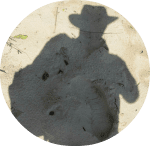
Essential Travel Guides
Kaparkan Falls:
A Hidden Gem of
Abra, Philippines
If you enjoyed reading “Kaparkan Falls: A Hidden Gem of Abra, Philippines ” then please share this page with your friends.
Leave a comment below to let me know what you liked best.
Follow Silverbackpacker on Facebook, Instagram ,Twitter and Pinterest for more travel adventures and be notified about my latest posts and updates!
Thankyou for sharing 🙂
Please Note – All blog post photos on Silverbackbacker.com are of a lower quality to enable faster loading and save you data. If you would like to buy or license higher quality copies of any of the photographs you can email us at silverbackpackertravels@gmail.com
All photographs and content on this website remain the property of Silverbackpacker.com. Images may not be downloaded, copied, reproduced or used in any way without prior written consent.
Print purchases entitle the purchaser to the ownership of the image but not to the copyrights of the image which still remain with Silverbackpacker.com even after purchase.
Follow Silverbackpacker for more of his Travels
Facebook @silverbackpacker | Instagram @silverbackpacker
Twitter @silverbackpaker | Pinterest @silverbackpaker
Audere Est Facere – Silverbackpacker.com – To Dare is To Do
Affiliate Disclaimer: Links on this website may be affiliate links that could result in us receiving compensation when you purchase a product or service from that link. You do not pay any extra fees for these items. This helps us to keep this website going. Thank you for your support.
Disclaimer | Privacy Policy | Cookie Statement © All Rights Reserved

